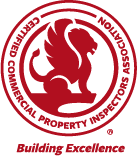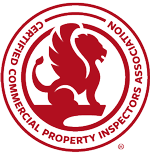About this video:
When inspecting a commercial property, a key aspect to consider is overhanging vegetation. Although commercial buildings surrounded by trees and foliage may enhance aesthetic appeal, overhanging branches can pose risks to the roofing system.
Why Overhanging Vegetation is a Concern for Commercial Buildings
- Debris Accumulation: Leaves, twigs, and other debris can accumulate on the roof. This can lead to blocked gutters and downspouts, potentially causing water pooling and subsequent roof damage.
- Physical Damage: Branches can scrape or puncture roofing materials, especially during severe weather conditions.
- Moisture & Mold: Close-contact vegetation can trap moisture that fosters the growth of mold or mildew and weaken the roofing materials over time.
- Pest Access: Overhanging branches may provide a pathway for pests like rodents or birds. This can lead to infestations on the roof or within the building.
Inspection Process
During a commercial building inspection, it’s essential to:
- Identify branches that are touching or nearly touching the roof.
- Observe signs of debris accumulation.
- Check for physical damage, mold, or pest activity.
Recommendations
For property managers or building owners:
- Ensure regular trimming of any branches or vegetation.
- Maintain gutters and downspouts to ensure they remain clean and functional.
- Initiate routine roof inspections, particularly after significant weather events, to verify the roof remains undamaged by overhanging vegetation.
Additional Resources for Commercial Property Inspections:


